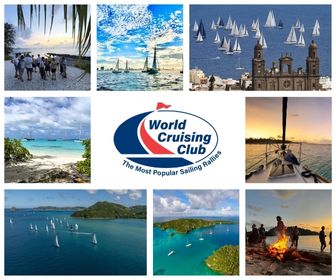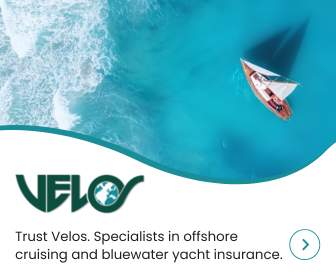Marshall Islands: Beautiful Creatures of the Majuro Lagoon
For the past few years, two teams of yachtie amateur scientists – John and Lynette Flynn on s/v White Hawk and Ken Cone and Beth Van Zummeren on s/v Eagle’s Wings – have been exploring and photographing some of the incredible biodiversity in the Majuro Lagoon of the Marshall Islands.
Published 4 years ago, updated 2 years ago
Focusing on very small creatures that are living in the tidal cuts of the Majuro Lagoon, John, Lynette, Ken and Beth have found species which were previously unknown in the Marshall Islands. John and Lynette have even found a number of creatures which were entirely new to science!
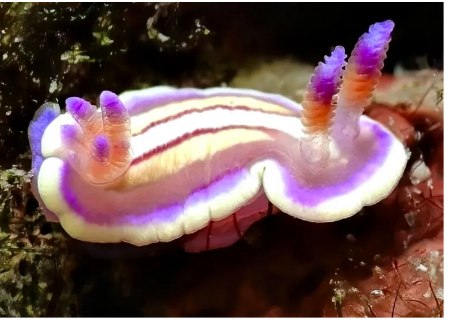

Nudibranchs – Colourful and Diverse
“We see all sorts of small creatures — frogfish, scorpionfish, beautiful shells and small crabs and shrimp,” says John. “But we focus on ‘nudibranchs,’ which means ‘naked gills’ in Latin. Nudibranchs are like snails without shells, except that they are incredibly colorful and diverse. There are literally thousands of species, many of which have never been described by science. It’s a huge thrill when we find something that no one has seen before. In total, we have seen more than 130 different species in the RMI, including four species that are new to science.”
Lynette adds: “Nudibranchs have all those wonderful colors as a way of warning predators that they are poisonous. They absorb toxins from the coral and other forms of life that they eat, which has allowed them to get rid of their shells.”
Both teams use sophisticated underwater camera housings and strobe lights to photograph these creatures. ( Visit the Marshall Islands Journal website, to see pictures in glorious color and high-resolution). “You can’t really appreciate these beautiful creatures in a black-and-white newspaper photograph!” says Lynette.
Both teams have been lucky to work by Internet with Marshall Islands nudibranch specialist Scott Johnson. “Scott spent many years in Kwajalein and has helped us a lot in identifying species.” says John. “And he has passed our pictures to other scientists who work in this field, so that more people can appreciate the biodiversity here in Majuro.” Scott’s website is https://www.underwaterkwaj.com/
Miniature Ecosystems
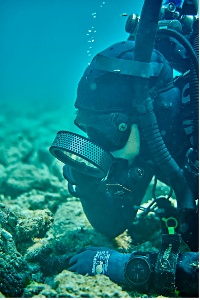

“The cuts where we dive can look barren – – just shallow water with rocks, a little bit of coral here and there and a few small fish,” says Ken. “But when we take the time to look closely, we find whole miniature ecosystems, full of small sponges and other marine growth. And occasionally we find what we’re looking for – – tiny nudibranchs and flatworms, many of them less than half an inch long. Beth uses a giant magnifying glass to spot creatures. And even with magnifying lenses on our cameras, we have to get right on top of them to get pictures.”
Most Nudibranchs don’t even have “common names,” only scientific names in Latin. “People know the names ‘tuna’ and ‘marlin,’ because everyone has seen them,” says Beth. “But most people will go their whole lives without ever seeing a nudibranch, so nobody gave them common names. The amazing thing is that they’ve been here in the lagoon for longer than people have been here. But they are so small no one notices them.”
“Of course, it probably helps that tuna and marlin and swordfish are good to eat!” says Ken. “Whereas about the only thing that will eat a nudibranch is another nudibranch.”
Diving has its Challenges
Diving in the cuts has its challenges. “We can only dive within a few hours of the low tide,” says John. “Once the tide rises enough that the waves start coming in from the ocean, then there’s just too much current for us to stay there. So we can only dive when the low tide happens during daylight.”
“Plus, we need reasonably good weather,” says Lynette. A little rain doesn’t matter, but if the wind is blowing from the south, then the lagoon gets choppy. It’s hard to take pictures in shallow water when you are getting thrown around by big waves. But sometimes we do it anyway.”
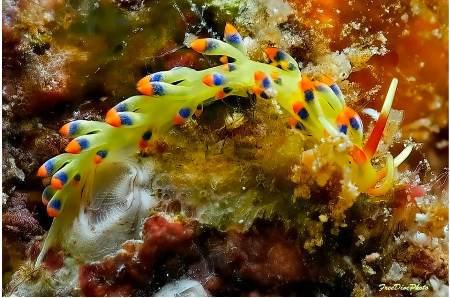

“John and Lynette told us about the Marshall Islands, and convinced us to come here,” says Ken. “We expected to do most of our diving in the outer atolls — and we did get to Rongelap — but unfortunately the yachts have all been confined to Majuro for the last year because of Covid. The good news is that Majuro has turned out to have amazing diversity. We can dive a cut for days, and then come back a few weeks or a month later and find a completely different set of species. There seem to be ‘blooms’ of nudibranchs, where one species will be really common for a while, and then another species will take over.”
“We’ve been working in the lagoon here for about two years now, and we don’t feel like we are close to seeing everything yet,” says Beth.
“Although we would love to visit the outer atolls again, of course,” says Lynette.
“But we are happy to have been in the RMI during the Covid pandemic,” says Ken. “No masks, no social distancing, no sickness, and a good opportunity to get vaccinated – – we think the government has done a great job, and we feel lucky.”
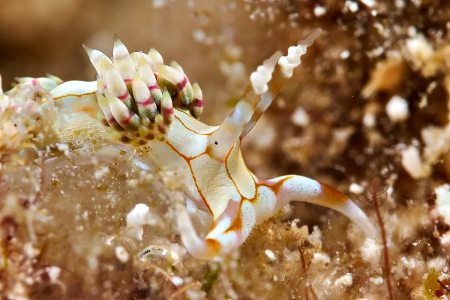

………………………………………………………………………………………………………………………………………
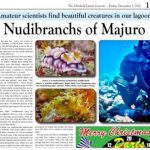

………………………………………………………………………………………………………………………………………
The opinions expressed in this article are the author’s own and do not reflect the view of Noonsite.com or World Cruising Club.
………………………………………………………………………………………………………………………………………
Related to following destinations: Majuro, Marshall Islands
Related to the following Cruising Resources: Citizen Science, Cruising Impact, Cruising Information, Environment, Volunteer Projects for Cruisers



